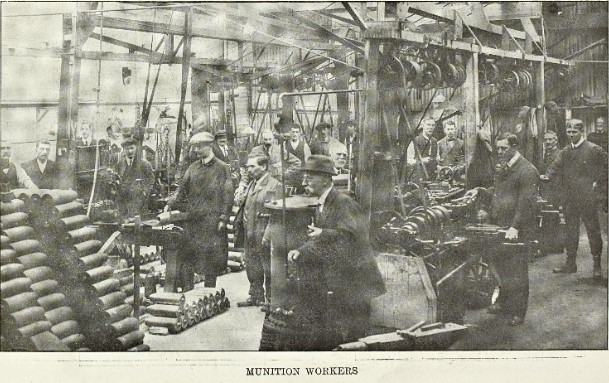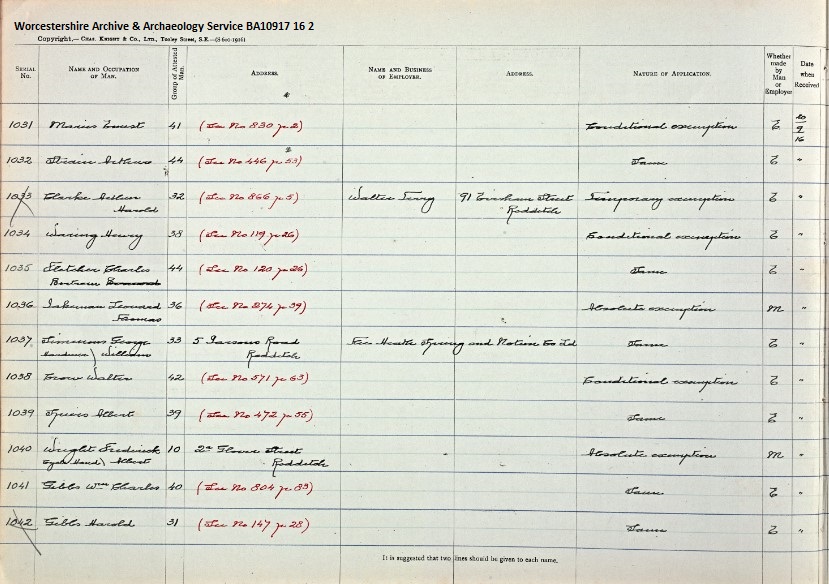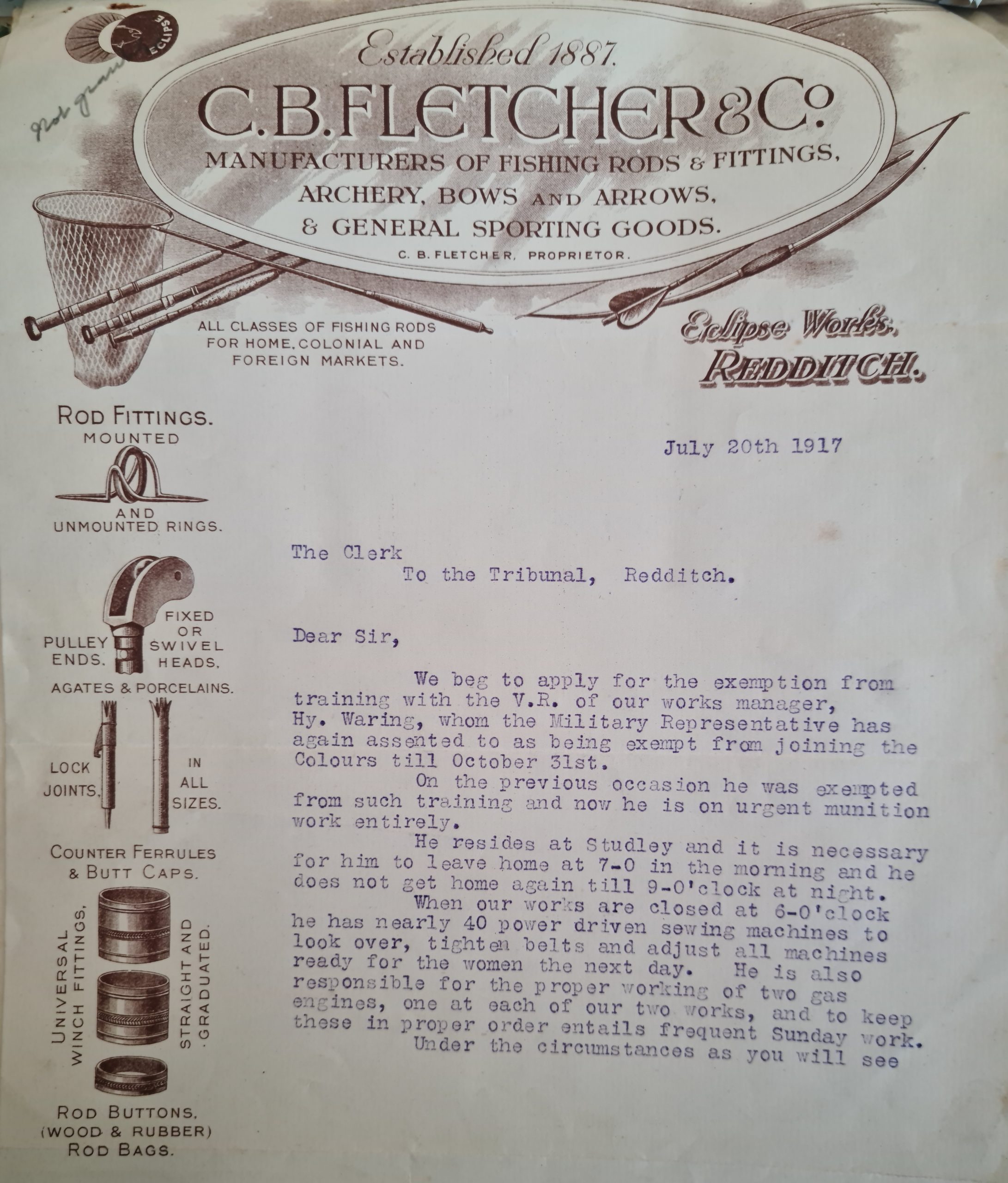Redditch Military Tribunal Project
The Redditch Military Tribunal Project was developed as an additional project to compliment the work of the Worcestershire World War 100 project. This was the largest WWI Commemoration project outside London, and brought together a large groups of partners to deliver events across the county.

The new project, following on, was considered important to ensure that these vital records, which are currently uncatalogued were accessible and known to the public. This was funded by the National Lottery Heritage Fund.
In 1921, the records of the Military Service Tribunals were ordered to be destroyed, except for the Middlesex Tribunal whose records were kept as a sample. Despite this some records survived elsewhere including records of the Redditch Military Service Tribunals. We are lucky to have the all the administrative registers covering the whole period of operation from 1915-1918 in which each application was logged and tracked by the Clerk of the Tribunal, G. Hobson who was also Clerk of the Redditch Urban District Council and a local solicitor. It is in the archive of the council in which we find these records. We also have letters sent to Hobson about the Tribunal mixed in with letters relating to his other responsibilities. This provided us with a fantastic resource and allowed us to uncover all the local Redditch men who needed to apply to the Tribunal for exemptions from conscription.

Munition Workers: Berrow’s Illustrated Supplement 3 June, 1916.
Military Tribunals
After the initial surge of interest in 1914, the numbers of men volunteering to fight in World War I dropped. The Derby Scheme of 1915 listed all the men who were both willing and eligible to fight, and in 1916 conscription was introduced to ‘call-up’ all men between 18 and 41 to fight. For those who could not fight due to their health, obligations, employment or beliefs the Military Service Tribunals were established to hear their cases and provide exemptions from conscription.
The Project
The 6 registers which cover all the applications to the Tribunal have been transcribed so everyone can access the information at home. These are all available as pdfs so they can be downloaded and searched at home from the project website.

Volunteers were recruited to help us by going through the registers to transcribe, them, and carry out research into the men involved.
We have also listed all the correspondence we could find relating to the Tribunals. This includes a brief synopsis of the content of the letter, who it was from and who it was about.
To allow us to research more efficiently we created an index in which every individual is listed along with all their numbers and personal information from the registers. We found that there were about 990 individuals who applied over the course of the war for an exemption. Index gives the employers and occupations of all the men from the registers too so we can see where applicants were working. As the war continued the men being called up included older age groups and men previously exempt due to their occupations. There was an increasing pressure for businesses to find replacements for men from non-combatant groups such as women, older men, and discharged soldiers.
The registers tell us what the applicant was applying for, the outcome and whether they appealed the decision. Most cases were for reserved occupations particularly the needle industry but also hooks, springs, the motor industry including the Enfield Cycle Co. and agricultural workers.
Because the Tribunals required men to apply repeatedly to extend their exemption certificates the same names reoccur throughout the volumes. Each time they applied their application was given a new number known as a ‘serial number’ so lots of the applicants have multiple numbers.
We have included our index with our registers so that you can now use it to track an individual through all their numbers, we have also added if we found them in other sources in which we researched. So, it gives you an overview of everything we found.
Our volunteers took the names from our index and looked for them in the 1911 census, the military service records and other sources. This helps to provide a broader picture and background to the men who are listed.

The Project website contains the transcribed information and records. An online exhibition will be added soon.
Blogs
Volunteer Perspective: The Ups and Downs of a Researcher
Case Study: George Irish – a man who won an award for bravery before the war. After applying for exemption for work he ended up joining the army.
Employees and Employers – looking at men who had exemption certificates due to their occupation, and the role employers played an appealing on behalf of their employees
Exhibition – the stories uncovered by volunteers and staff have been brought together in an online exhibition
